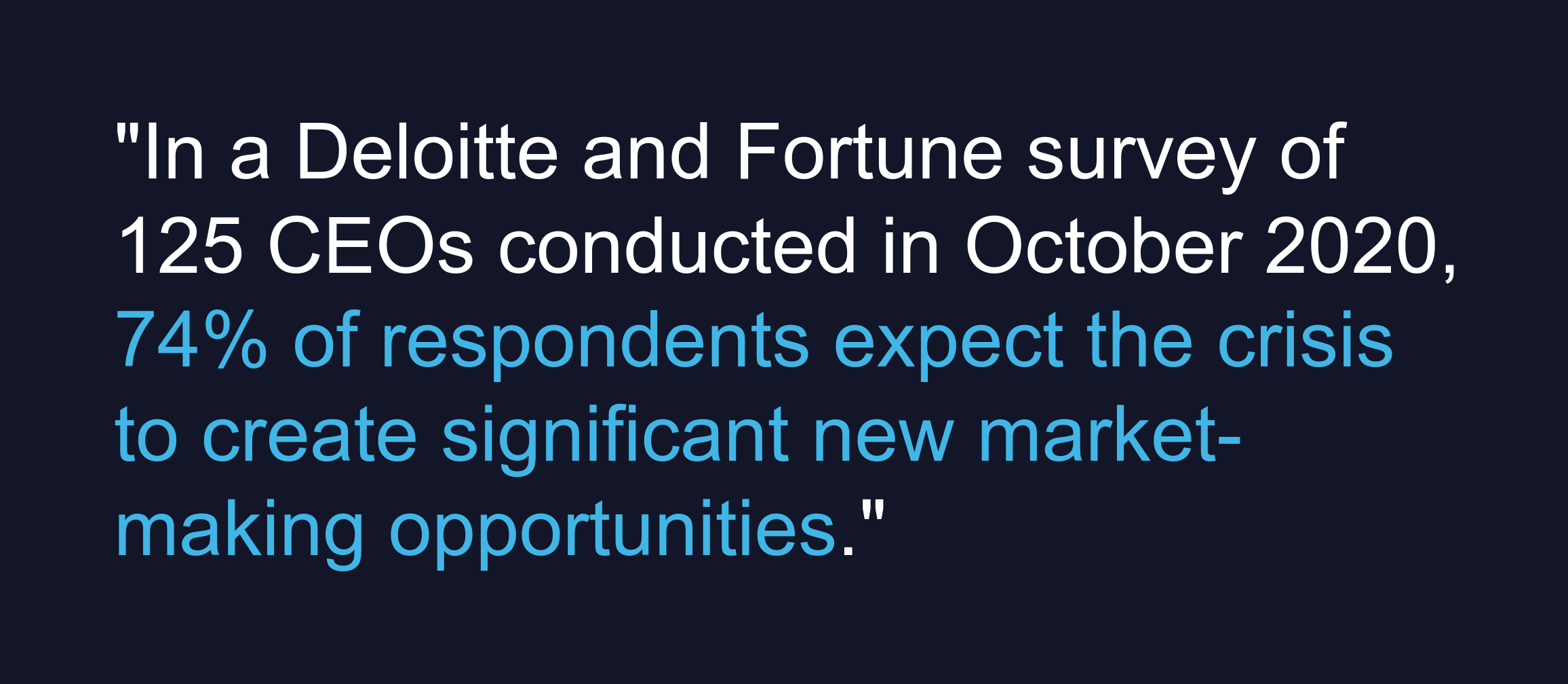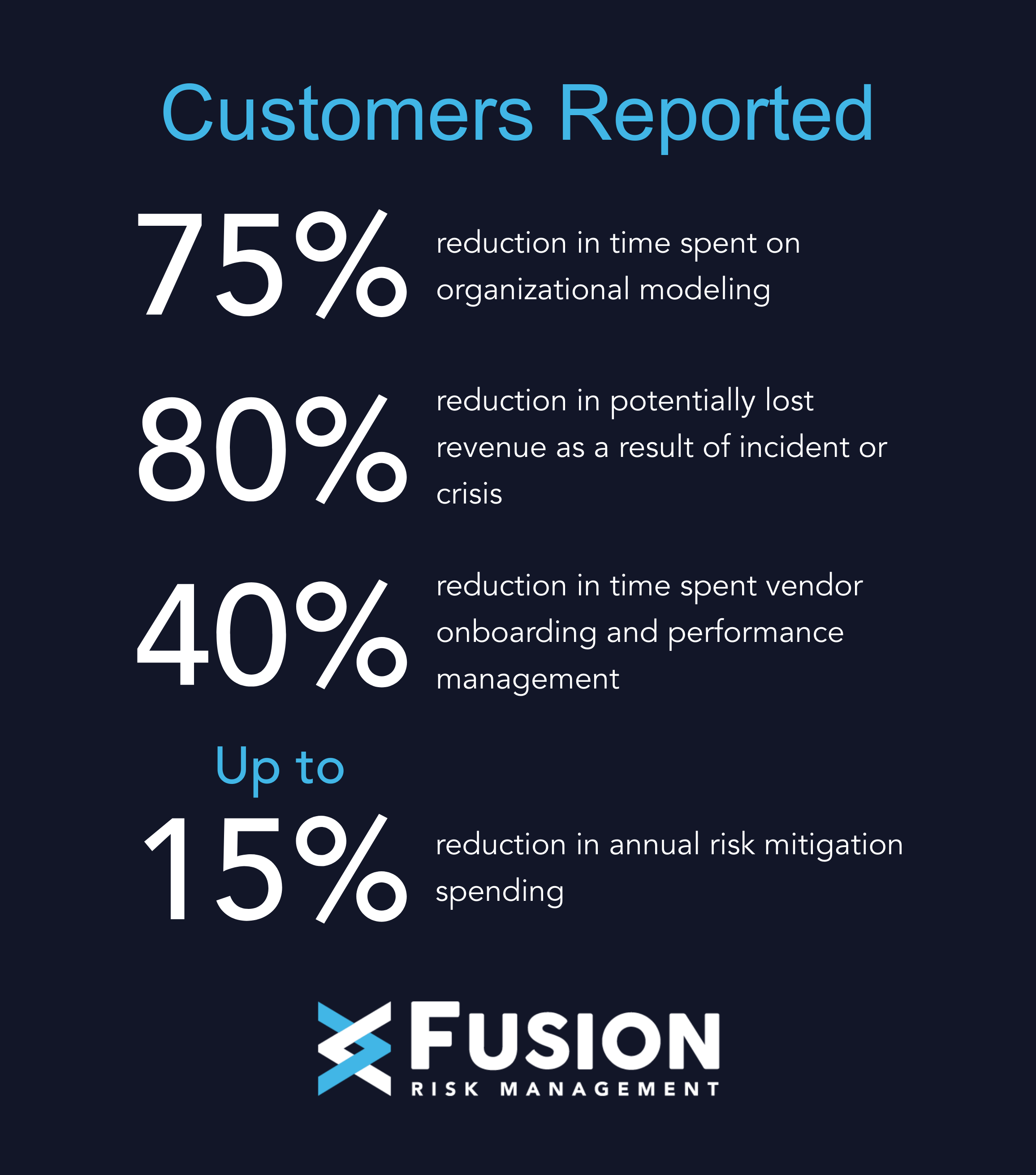As the evolution of the pandemic continues to shift business needs and perspective, building operational resiliency to protect against potentially adverse scenarios and deliver exceptional customer experiences has become both exponentially imperative and increasingly complex. Prior to COVID-19, many organizations defaulted to managing risks in lists or registers independent of each other. In stark contrast to that traditional model, what the pandemic has made abundantly clear is that risks are tightly interconnected and dependent on one another, and the combinations of multiple adverse events occurring simultaneously could be catastrophic. In fact, in August 2020, 95% of companies said they need to revisit their enterprise risk management framework and crisis management plan as a result of COVID-19.
In this era of unprecedented uncertainty, delivering on your customer promise is more important than ever. Operational resilience empowers your organization to continue to deliver on your current commitments to customers and evolve with them in a way consistent with your brand as circumstances and needs change. Visualize your products and services from a customer perspective to ensure operations within your business are running smoothly and deliver on your promise to customers to support them in achieving in their strategic goals – and protect your brand in the process. When companies begin to understand their business processes from the customer’s viewpoint, they uncover gaps that can lead to new products, services, or business models and additional paths to revenue. In a Deloitte and Fortune survey of 125 CEOs conducted in October 2020, 74% of respondents expect the crisis to create significant new market-making opportunities. The door to value-creating innovation has opened, and it’s time to seize the moment.

How it works, how it breaks, and how to put it back together again
Building operational resilience that scales across your organization starts with truly understanding the criticality of your business operations and processes and how they are intricately linked to one another. You need to understand how your business works, how it breaks, and measures you can take to fix it and lessen future risks. You must effectively explore every aspect of your business so you can identify points of friction, single points of failure, and key risks and understand exactly which actions you need to take next to mitigate impact. Siloed, antiquated data collection processes hamper your organization’s ability to do this effectively, and executives are taking note.
Organizations cannot afford to make critical decisions based on incomplete or inaccurate data. Investment in risk management software to interpret real-time data, better understand patterns and trends, and improve business operations is essential. Historically, investments in technology have been focused on automation and cost savings. While those benefits remain critically important, executive mindsets are shifting quickly and drastically to appreciate the elevated role technology plays in an organization’s strategic priorities, particularly in economic recovery after COVID-19. In a McKinsey global survey of executives from July 2020, respondents acknowledged that COVID-19 has accelerated the digitization of their customer and supply chain interactions and recognized the integral, strategic role that technology plays as a critical component of the business. In the survey of executives, the top three responses on their organization’s strategic posture toward technology were: investing more in technology to create a competitive advantage, modernizing core technology capabilities to keep up with competitors, and refocusing the entire business around digital technologies. In order to meet the evolving needs of the market, executives are realizing that implementing resiliency with a trusted technology partner facilitates new opportunities to transform the business, deliver on customer expectations, and thrive in the midst of broadscale change.
Fusion enables organizations to understand how their end-to-end business services are delivered, capture all the components required to operate their business processes, and easily link processes to other processes, sites, and associated risks. Fusion customers interviewed for our ROI report in July 2020, commissioned by Hobson & Co, reported a 75% reduction in time spent on organizational modeling to map data and processes in a consistent and accurate manner, providing the ability to explore dependencies and potential impacts and shift focus to the most significant areas of risk. By knowing your organization inside and out, you are more prepared to protect and take the risks necessary to grow your business.

What’s your risk?
Risks are deeply interconnected and encompass a complex web of relationships both inside and outside the organization and can no longer be managed as separate entities in isolation. Firms must challenge the outdated concept of siloed, independent risks and adopt a more holistic approach that views risk systemically to accurately capture the true impact and proactively mitigate worst case scenarios. Systemic risks can be difficult to perceive or measure at first because they are often a combination of events that adversely affect each other resulting in a disaster scenario and therefore need to be viewed through a comprehensive lens to capture the full impact to the overall business.
For example, let’s take another look at the impact of COVID-19. Most organizations were not prepared for the impact of a global pandemic and the subsequent government measures and regulations that occurred. In a FERMA study of 5,000 risk managers in Europe, only 31% of respondents said that a pandemic was part of their organization’s risk register a year ago. The survey demonstrates the damaging impact of the pandemic on organizations regardless of industry with 69% of respondents reporting a negative financial impact to the organization and 62% reporting a negative operational impact. In the same study, 75% of respondents agreed or strongly agreed that the role of the risk manager will increase in importance for their organizations as a result of the evolving risk landscape.
An emerging, customer-centric perspective of risk
Fusion empowers customers to manage the complexity of multi-layered risks with a simple, unified view of their dependencies across the enterprise, minimizing the financial and operational impacts in the event of business disruptions. Customers interviewed for our ROI report described up to an 80% reduction in potentially lost revenue. Fusion provides organizations with the real-time data and actionable insights to be able to quickly assess situations, allocate resources accordingly, and mitigate expected losses. Understanding the interdependent components of risks allows organizations to build an agile approach that leverages data and resources proactively to avoid revenue loss and operational impacts.
Organizations are not simply going to emerge from this crisis and return to normal because the world we’re going back to isn’t what we left. Reshaped business models, consumer preferences, and market structures have fundamentally changed the way businesses operate and how they deliver goods and services to their customers. These extraordinary market challenges require transformative change. Instead of simply emerging from crisis, organizations must evolve their people, processes, and systems to rise above the chaos with resiliency embedded throughout every corner of the business to ensure long-term financial and operational viability. Fusion is the only integrated platform designed to do just that. Partner with Fusion to leverage technology that amplifies resilience at scale.
Sources:






